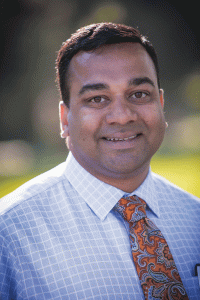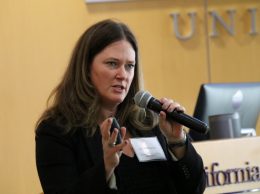Khan: Splintered internet result of freedom of speech

Sabith Khan
By Sabith Khan
Will “fixing” the internet in terms of bridging the digital divides bring us closer? I have thought about this question for quite a bit in the context of the recent uptick in political polarization, racism, hatred and all forms of ugliness that have manifest themselves in the American public sphere. One could also make this argument for many parts of the world, where right-wing, and often religiously conservative, governments have come to power and are spewing hatred against all those who are perceived to be outsiders. India, Brazil and Hungary are some examples of where this phenomenon is most visibly manifest, but the list goes on. Turning off one’s social media account and spending less time on the internet — as I have done with Facebook — may only solve the problem temporarily. There needs to be a more structural approach to addressing the “splinternet,” an internet that has become balkanized into a million little groups.
My own experience with the splinternet phenomenon is as old as my exposure to the internet. I remember the first time I used the internet, in the early to mid-2000s, in India, where I spent my formative years. Most Indians could not afford to have internet at home — even dialup connections were prohibitively expensive. I frequented a cybercafe to check email, correspond with my friends and family in the United States, and learn about the world that was out there. We previously had access to satellite TV, radio and other means, but the internet was unique in connecting us to the world outside in an instant. The speed and ability to reach anyone with a few clicks made the world seem very close.
That was until a few ugly incidents of rioting brought with them a chain of emails and graphic images that we had never been able to access through mass media. This new phenomenon changed how we received news — unfiltered, raw and often visceral. I also noticed the element of propaganda and the ability to “create” truths that were often unchecked by others. In 2019, as we grapple with the notion of “fake news” that our president likes to harp about and his own manufactured realities, I think back to the days of the internet’s infancy when my circle of friends debated these issues. I was enrolled in a journalism course and these questions of what is true, who decides it and how or if we should control it became salient.
It matters that India is a democracy and highly regards freedom of speech — just like the U.S. While there are not as many robust mechanisms to protect speech as in the U.S., India is still by far freer than many other countries in the region. Freedom House, the Washington, D.C.,-based think tank that analyzes media freedom in countries around the world, ranks India as “partly free,” noting the recent uptick in censorship by the right-leaning government that has sought to frame any criticism of its agenda as “anti-Indian.”
Looking at the case of these two democracies, one can see how there are parallel movements in censorship and the framing of any anti-government rhetoric as “anti-national.” The Indian Information Technology Act has provisions for filing lawsuits for defamation and the like based on what is posted on websites, etc. The challenge is to find a balance between what the government decides is the truth and what uncontrolled mobs of trolls determine is reality. So, where and how will a compromise emerge? Do governments have a role in regulating the internet to make it “fairer” and “truthful?” Is a compromise between absolute freedom and absolute censorship even possible?
• Sabith Khan is an assistant professor in the California Lutheran University School of Management.











